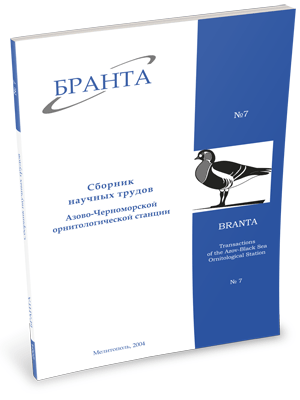
Transactions
of the Azov-Black Sea Ornithological Station



Present characteristics of breeding settlements of herons species in the Black Sea Biosphere Reserve.
Yaremchenko O.A., Rudenko A.G.
This article submits materials on actual number dynamics and distribution of breeding settlements of eight species of herons (Ardeidae). A special attention is given to the description of eight breeding groups of herons species in the Black Sea Biosphere Reserve. There are presented data on breeding ecology of different species of herons.
Over the last years a breeding group of Ciconiiformes in the Black Sea Biosphere Reserve (1990-2004) exists under difficult ecological conditions. The area of reedbeds is contracting and it means contraction of breeding habitats which herons prefer. The birds suffer from disturbance and destruction of nests by beasts and birds of prey (marsh harriers, foxes, raccoon dogs, wolves). Island colonies are flooded a little and are subject to territorial competition from the Cormorant. Acting during last 14 years all these negative factors led to changes in settlements of Ciconiiformes in the reserve:
1. Colonies in tree plantations decayed. All of them had been of 7 years old and over the last years had suffered from strong complex influence of disturbance factors.
2. Some settlements in inland reedbeds decayed because of worsening of breeding conditions in these territories: the area of reedbeds decreased, and a disturbance factor increased.
3. Colonial settlements started to form on the islands in grassy vegetation. This process is actually continuing аnd accompanied with intensive redistribution of birds and short-time existence of some colonies.
Read the paper in a PDF file